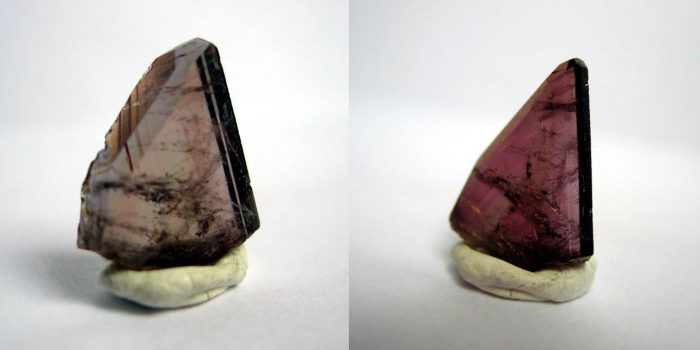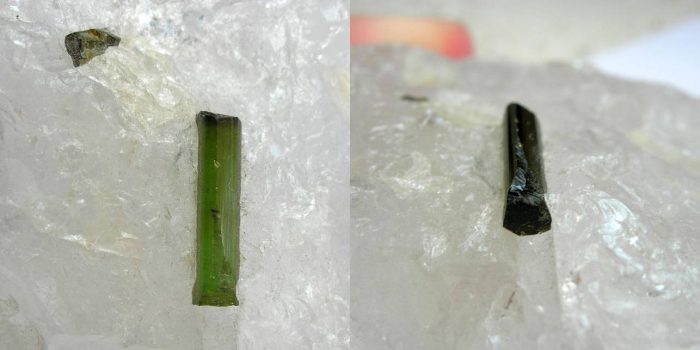Pleochroism of minerals is an optical phenomenon that affects certain minerals. It is characterised by a variation in the colour of the mineral depending on its orientation. The different axes are oriented at 90° to each other.
Pleochroism can be expressed in a more or less visible way. We speak of strong, medium and weak pleochroism.
This phenomenon occurs in anisotropic minerals, where the crystalline structure differs according to the axes of symmetry. Depending on the orientation of the crystal, these minerals absorb certain wavelengths of light differently, resulting in variations in hue. Gems such as cordierite, axinite, tanzanite or beryl are famous for their pleochroism, displaying distinct colours depending on the angle of observation, ranging from blue to violet or green. This optical property is not only a highly prized aesthetic criterion in gemmology, but also a valuable tool for identifying and studying the crystalline composition of minerals in geology.
Translated with DeepL.com (free version)
When the mineral shows a variation between two colours, it is called dichroism. In the case of a variation between three colours, it is called trichroism.


Example of the pleochroism from brown to violet of an axinite from the Oisans.


Example in image of the pleochroism from green to brown of a verdelite (green tourmaline variety elbaite).
Here are some minerals that show pleochroism:
- Verdelite
- Cordierite
- Axinite
Leave a Reply